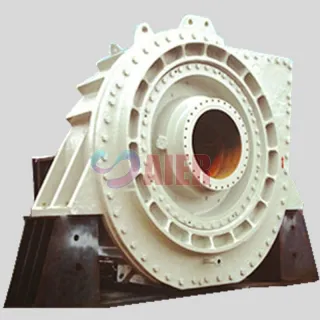Oct . 13, 2024 01:03 Back to list
dredge pump
Understanding Dredge Pumps Functionality and Applications
Dredge pumps play a crucial role in the extraction and transportation of materials from the bottom of bodies of water, such as rivers, lakes, and oceans. Designed specifically to handle abrasive and viscous materials, these pumps are essential tools in industries like dredging, mining, and construction. In this article, we'll explore the functionality of dredge pumps, their key components, and the various applications in which they are used.
What is a Dredge Pump?
A dredge pump is a specialized type of pump designed to move sediment, sludge, and other aggregates from dredging operations. Unlike standard pumps, which are typically designed to move clear liquids, dredge pumps are engineered to handle a mixture of solids and liquids, which can include mud, silt, gravel, sand, and other materials. Their heavy-duty construction and unique design allow them to operate efficiently in tough conditions, making them indispensable for dredging activities.
Key Components of Dredge Pumps
The efficiency of a dredge pump hinges on several key components
1. Pump Body The pump body is usually constructed from materials resistant to wear and corrosion, such as high-chrome iron or rubber-lined steel. The durability of the pump body is critical as it must withstand the abrasive nature of the materials being pumped.
2. Impeller The impeller is the rotating component that creates the flow of water and slurry. Dredge pump impellers are designed with wide open passages to minimize blockages and maximize the flow of heavy materials.
3. Volute The volute is the part of the pump that collects the fluid and directional changes as it exits the impeller. This component is essential for converting kinetic energy from the impeller into pressure energy, facilitating fluid movement.
4. Suction and Discharge Flanges These flanges connect the pump to the suction hose and discharge pipeline. They are designed to handle high pressures and prevent leaks, ensuring efficient material transfer.
dredge pump

5. Drive Mechanism Dredge pumps can be powered by various mechanisms, including diesel engines, electric motors, or hydraulic systems. The choice of the drive mechanism depends on the specific application and operational requirements.
Applications of Dredge Pumps
Dredge pumps are used in various applications across multiple industries
1. Dredging Operations This is the most obvious application. Dredge pumps are employed to remove silt, sand, and sediment from the bottom of bodies of water to maintain navigable waterways or construct harbors and docks.
2. Mining In mining operations, dredge pumps are often used to extract minerals from river beds or ocean floors. They allow for the efficient retrieval of valuable resources while minimizing environmental impact.
3. Land Reclamation Dredge pumps play a vital role in land reclamation projects, where materials are relocated to create new land areas, such as artificial islands or expanded coastlines.
4. Environmental Remediation Dredge pumps are utilized in environmental cleanup efforts to remove contaminants from sediment in polluted waterways, helping restore ecosystems.
5. Construction Debris Removal In construction projects near bodies of water, dredge pumps help in the removal of debris and materials that may obstruct aquatic activities, thus ensuring a clear workspace.
Conclusion
Dredge pumps stand as critical equipment in various industries, showcasing their versatility and adaptability. Their robust design and capacity to handle challenging materials make them indispensable in dredging, mining, environmental remediation, and construction. As technology advances, so too will the capabilities of dredge pumps, leading to more efficient operations and reduced environmental impacts. Whether for maintaining vital navigation channels or supporting resource extraction, the importance of dredge pumps continues to grow, solidifying their place as essential tools in modern industry. Understanding the intricacies of these pumps allows for better decision-making in their selection and application, ultimately contributing to the success of numerous projects worldwide.
-
Top Submersible Pump Companies High Quality Manufacturers & Suppliers in China
NewsJul.08,2025
-
High Quality Seal for 5 Inch Dredge Pump Reliable China Manufacturer & Supplier
NewsJul.08,2025
-
High-Efficiency Slurry Sand Pump from Leading China Manufacturer – Durable & Reliable Solutions
NewsJul.07,2025
-
High-Quality Slurry Pump Made in China Durable Steel Mill Slurry Pump & Parts
NewsJul.07,2025
-
High Quality Excavator Dredge Pump Manufacturer & Suppliers from China – Reliable, Durable, Efficient Solutions
NewsJul.07,2025
-
Wholesale Slurry Pump Closed Impeller Supplier High Efficiency China Slurry Pump Closed Impeller
NewsJul.06,2025
